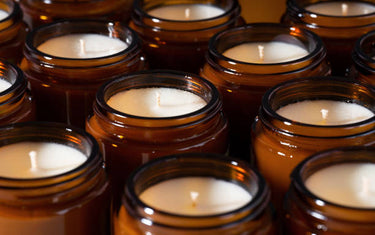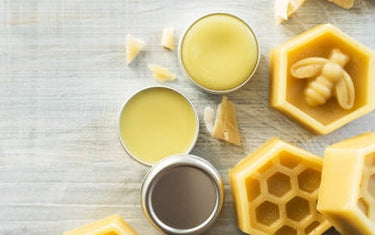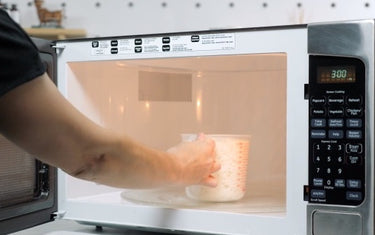4 min read / 17 December 2023 / yasmin sharp
Calculating How Much Wax to Use When Making Candles
Discover the art of candle making and master the skill of determining the perfect amount of wax for your projects.
Share this post

Perhaps one of the most difficult aspects of candle making is knowing how much wax you need to make a candle.
It’s an important part of the process, because by having the right materials to hand you can save valuable time and money.
We’ve put together a guide on how much wax you need to make a candle, other factors you may need to consider and step-by-step instructions on what calculations you need to use and how to measure wax for candles.
How much wax do you need to make a candle?Because wax turns to liquid when melted you can use water to calculate the volume of the container that will hold the candle:
Once you have the volume of the container you will then need to multiply it by 0.9. This is because wax has a lower density (900 kg/m3) and once multiplied the figure will give you the grammage you need for the container. However, this will not take into account any additional fragrance you may want to add to the container, so be sure to make allowance for this in your final calculations. |

How to use your own candle wax calculator
Using the information above you can make your own manual candle wax calculator.
For example, if you have a container with a 25cl capacity, the volume would be 250g/ml. Ideally, you want to have a wax level that sits about 1 cm from the top of the container, so you should fill it with 200ml of water. You can then use the following calculation:
200 x 0.9 = 180 grams
The 200 figure represents the amount of water in the container, the 0.9 is used to convert the water density to the wax weight and the final figure is how many grams of wax is needed.
If you have more than one container, you simply multiply the total (180g, for example) by the number of candle containers. So, if you have 10 candle containers of the same size, the calculation would be:
180 x 10 = 1800 grams

How much wax per candle is needed if you are using fragrances?
As we mentioned above, the initial calculation does not account for any fragrances you may want to add to the container.
This will also require a gram calculation that needs to be added into the final figure. For example, if you wanted to add a 10% fragrance load to a single candle container, the calculation would look like this:
180 x 0.1 = 18 grams (the 0.1 is used to represent the 10% fragrance load).
This would alter the original calculation for the wax, so to get the final number of grams needed for the candle that includes the fragrance, the calculation would be:
180 x 0.1 = 18
You then deduct this from the wax calculation:
180 – 18 = 162.
This means you will need 162 grams of wax for the candle, so you can add 18 grams of fragrance so once the wax sets in the container it will set at the 200ml mark.
How many wax melts will 100g make?
The amount of wax needed to make wax melts depends on their size and how many fragrances you want to add.
Most wax melts are about 10g in weight, so if you are only adding a single fragrance, you could use the following calculation:
100 x 0.1 = 10 grams
This means that, including the fragrance load, the wax volume will be 110g. So, if you are making 10g wax melts, you should be able to make 11 wax melts.
What is the best wax for candle making?
The best wax for candle making depends on your specific needs and preferences. Here are the most popular options:
- Soy Wax: A natural and renewable option, soy wax is eco-friendly, provides a soot-free burn, and holds fragrance well. It's ideal for container candles and is easy to clean up, making it a favourite among many candle makers.
- Beeswax: Known for its long burn time and natural honey scent, beeswax produces minimal smoke and drips. It's best for pillar and taper candles.
- Paraffin Wax: The most commonly used wax, paraffin is inexpensive and versatile, holding colour and scent effectively.
- Coconut & Rapeseed Wax: This newer option blends well with other waxes and offers a clean burn with good scent throw, making it suitable for various candle types.

Once you know how much wax you need to make a candle, it becomes a lot easier to plan and finish the job.
Using water to find out the correct volume and weight will help you make the most of your materials, especially if you are adding fragrances to the recipes.
You can also use our guide to figure out how many wax melts you can make, so whether they are for personal use or you make them to be sold, you can plan ahead with confidence.









